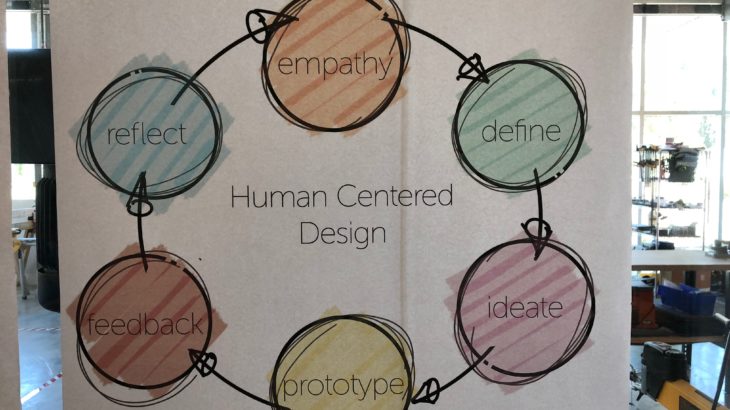A prototype is more than just a shiny, new piece of technology — it’s a methodology. Every entrepreneur will prototype their product or service, but only some go through this process effectively. Blake Wigdahl knows this process well. As the vice president of design and business development at Western Architectural, he has led many projects and considers himself an experiential designer. His prototyping process follows design thinking, while putting an emphasis on play.
Wigdahl delivered a workshop on prototyping in Lassonde Studios’ Make Space. He began by having our students write down their definition and reason for prototyping on sticky-notes. Throughout the workshop, he used hands-on examples and materials to allow students to form new ideas and get creative. In case you missed it, here were some of his top tips for prototyping:
“Even a good product, in the end, is a prototype. People change, environments change.”
Your product will not be perfect when it goes to market, whether you think it is or is not. Wigdahl measures the longevity of a company and product on its ability to adapt to and improve based on customer needs. Relevancy is king, and you may be making more changes than you would have originally thought to maintain or improve your standing. The only way to ensure that your product is done right, however, is by going through the design process: empathy, define, ideate, prototype, feedback, reflect and repeat. Most importantly, always be able to answer the question, “Who is my user, and is my product helping them?”
“You have an expert blind spot.”
It can be increasingly difficult to look at your product objectively as you get more attached to it. This is why having your prototypes tested on audiences other than yourself is valuable. Be careful not to over-inform or over-instruct your testers on your product or service. If your experimental group does not understand, don’t be discouraged. This simply indicates that the product or service requires too much explanation and needs to be simplified.
Wigdahl summarizes this point in three words: play, curiosity, inquire. To Wigdhal, play is “socially safe exploration.” If you allow yourself to have fun and be taken out of your day-to-day mindset, you can become more receptive to feedback. He then discussed the importance of curiosity, which he considers to be the formal act of exploring and questioning. The final step is inquiry, accomplished by observing and actively answering questions that arise. New discoveries will only come if you are willing to see the world differently.



